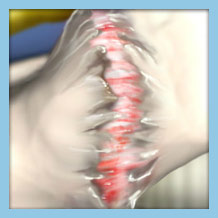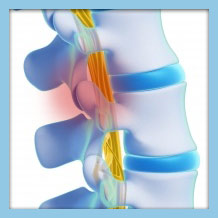

How Do I Know if I Have Facet Joint Disease?
Common facet disease symptoms include localized pain and stiffness, or loss of flexibility. The pain will usually worsen as the patient bends backward, but will get better as they lean forward. As this condition worsens more pressure is applied to nearby joints as a result of the reduction in flexibility. Treatment for facet joint syndrome should be started as soon as the condition is discovered.
Do you have any of these symptoms and think you may be suffering from facet joint disease? We have a quick and easy tool to help gather some information from you to help us determine what your problem is and get you on the road to recovery.
What is the Right Treatment for Me?
Facet joint disease treatment involves rest, anti-inflammatory medication, and exercises to help build the muscle needed to better support the spine. As the condition progresses and there is more need for it, physical therapy may also be added to the treatment plan. Only once conservative treatments have been exhausted should surgery be considered.
Orthopedic and Laser Spine Surgery provides a wide range of treatment options and because our doctors are the most experienced and best trained in treating spinal conditions we are able to perform many advanced treatments other practices are unable to offer.
The real question is: What treatment is best to treat your facet joint disease? Use our Treatment Match tool to quickly get started in finding the right treatment for you.
Frequently Asked Questions About Facet Joint Disease
What Are Symptoms of Facet Joint Disease?
Symptoms of facet joint disease may depend on the number of facets affected and the condition. However, the most common facet disease symptoms are localized pain, stiffness, and decreased mobility.
Where Does Facet Joint Disease Occur?
Facet joint disease commonly occurs in the cervical and lumbar spine. Facet joint disease happens as we get older and our joints begin to wear down. The pain is mostly caused by an injury, repetitive movements, and other spine conditions.
What Can I Do to Prevent Facet Joint Disease?
To help prevent facet joint disease you must do regular stretching, strengthening, and cardiovascular exercises. Doing these physical activities could help reduce stress and slow down the degeneration process by improving your overall strength.
